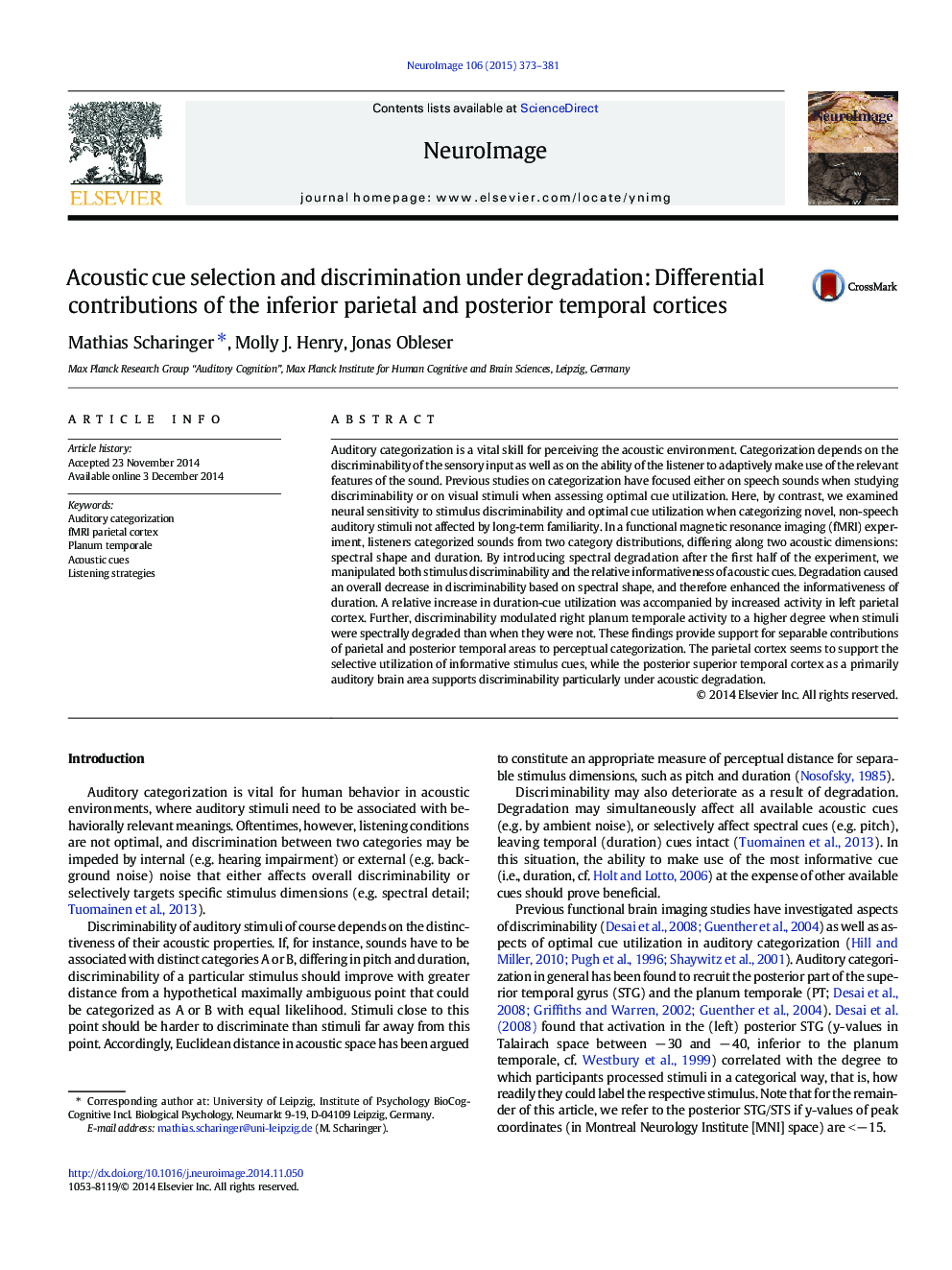| Article ID | Journal | Published Year | Pages | File Type |
|---|---|---|---|---|
| 6026585 | NeuroImage | 2015 | 9 Pages |
â¢We examine changes in auditory spectro-temporal cue utilization in nonspeech stimuli.â¢Spectral degradation induces greater reliance on duration cues.â¢Left inferior parietal lobule activity covaries with changes in cue utilization.â¢Posterior superior temporal cortex tracks discriminability under degradation.
Auditory categorization is a vital skill for perceiving the acoustic environment. Categorization depends on the discriminability of the sensory input as well as on the ability of the listener to adaptively make use of the relevant features of the sound. Previous studies on categorization have focused either on speech sounds when studying discriminability or on visual stimuli when assessing optimal cue utilization. Here, by contrast, we examined neural sensitivity to stimulus discriminability and optimal cue utilization when categorizing novel, non-speech auditory stimuli not affected by long-term familiarity. In a functional magnetic resonance imaging (fMRI) experiment, listeners categorized sounds from two category distributions, differing along two acoustic dimensions: spectral shape and duration. By introducing spectral degradation after the first half of the experiment, we manipulated both stimulus discriminability and the relative informativeness of acoustic cues. Degradation caused an overall decrease in discriminability based on spectral shape, and therefore enhanced the informativeness of duration. A relative increase in duration-cue utilization was accompanied by increased activity in left parietal cortex. Further, discriminability modulated right planum temporale activity to a higher degree when stimuli were spectrally degraded than when they were not. These findings provide support for separable contributions of parietal and posterior temporal areas to perceptual categorization. The parietal cortex seems to support the selective utilization of informative stimulus cues, while the posterior superior temporal cortex as a primarily auditory brain area supports discriminability particularly under acoustic degradation.
